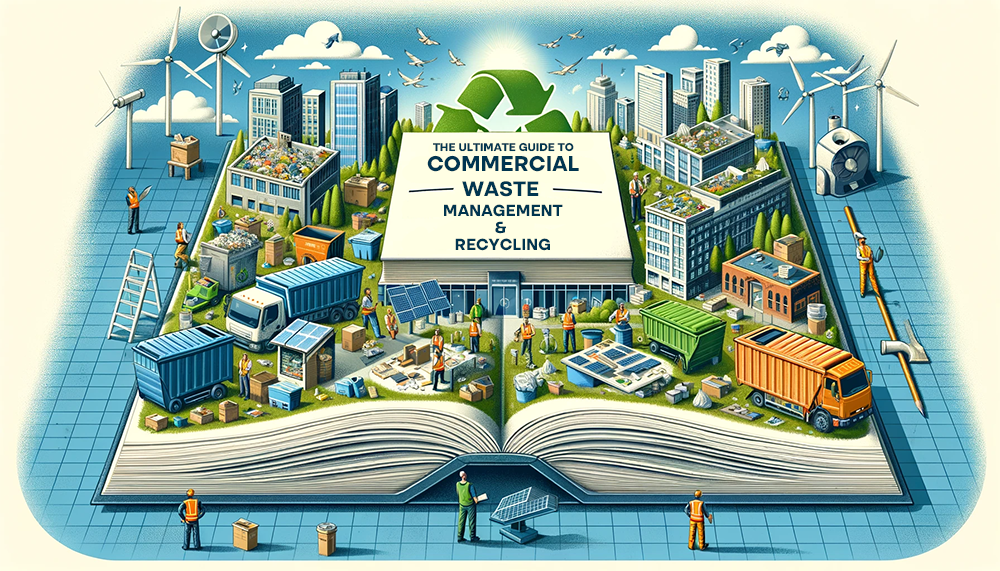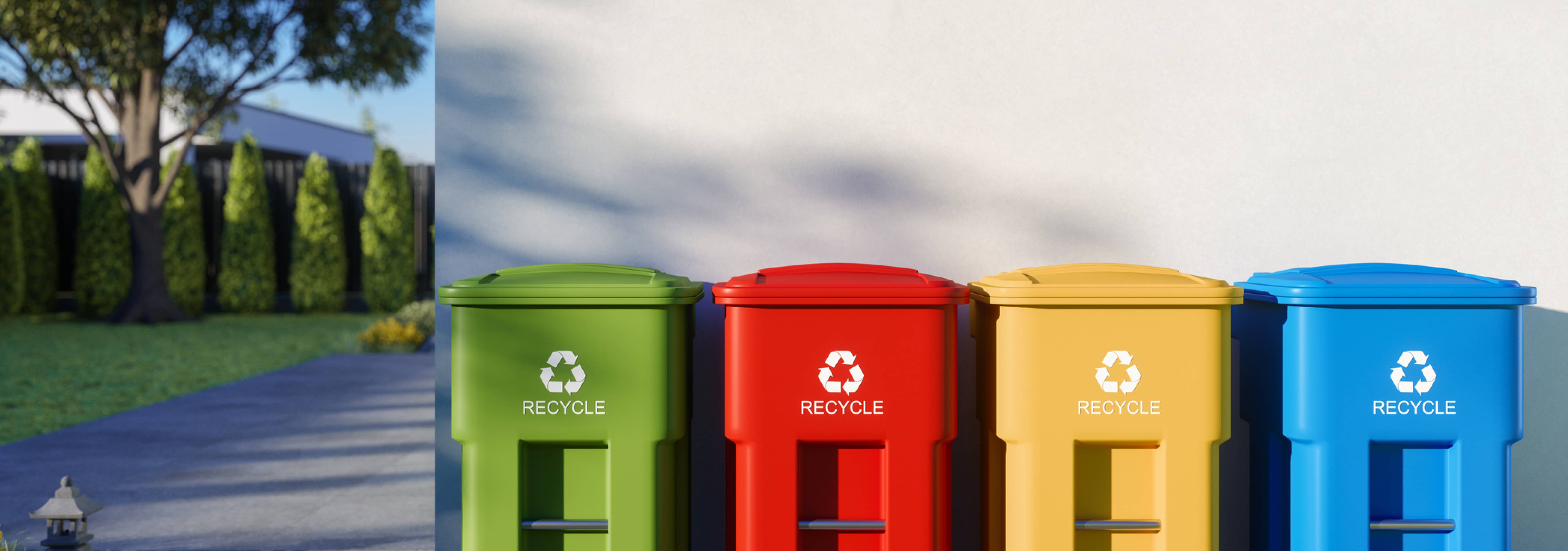Recycling Lives Services: Blazing A Trail in Liable Recycling
Recycling Lives Services: Blazing A Trail in Liable Recycling
Blog Article
Discovering Different Sorts Of Waste in Modern Waste Management Equipment
The modern landscape of waste management entails browsing a complex selection of waste kinds, each needing specialized handling and disposal approaches to alleviate environmental influences. Community strong waste, contaminated materials, electronic waste, and natural waste each present distinctive difficulties and opportunities for source recuperation. Ingenious remedies such as wise waste containers and waste-to-energy innovations are arising as critical tools in improving efficiency and sustainability. Comprehending these waste kinds is important for cultivating public understanding and motivating active participation in sustainable techniques. What techniques can properly address these different kinds of waste while promoting a circular economic climate?
Municipal Solid Waste
Metropolitan strong waste, usually referred to as household trash or garbage, encompasses a variety of discarded materials generated by residential, commercial, and institutional sources within a municipality. This waste stream typically includes things such as product packaging, food scraps, backyard trimmings, paper, plastics, fabrics, and disposed of home goods. The management of municipal strong waste is an important component of urban preparation and public health, requiring reliable collection, transportation, and disposal systems.
Efficient waste management systems are created to minimize environmental effect while making the most of source recovery. Composting organic waste, such as food scraps and backyard trimmings, not only minimizes land fill usage however additionally produces useful dirt amendments.
Communities should likewise resolve the economic and logistical difficulties connected with waste management. Carrying out pay-as-you-throw systems, improving public recognition, and purchasing innovation can dramatically improve waste diversion rates. By integrating these practices, towns can promote lasting areas, minimize greenhouse gas emissions, and preserve natural deposits.
Hazardous Waste

Reliable unsafe waste monitoring includes a number of essential actions: recognition, segregation, disposal, and therapy. Partition makes sure that dangerous materials are saved independently from non-hazardous waste to stop cross-contamination.
Regulative frameworks, such as the Source Preservation and Healing Act (RCRA) in the United States, provide standards and requirements for contaminated materials monitoring. Adherence to these guidelines, coupled with advancements in waste therapy innovations, is vital in reducing the threats related to hazardous waste.
Digital Waste
Electronic waste, commonly described as e-waste, represents a swiftly growing obstacle in waste administration systems internationally. This type of waste incorporates thrown out electronic tools and equipment such as smartphones, computer systems, televisions, and various other electronic home appliances. The fast pace of technological improvement, paired with decreasing product life-spans and customer demand for the most recent devices, has greatly enhanced the quantity of e-waste created every year.
E-waste is specifically bothersome due to its complicated make-up, commonly having dangerous materials like cadmium, mercury, and lead, which position considerable ecological and wellness threats if not correctly handled. On the other hand, e-waste additionally contains important products such as gold, copper, and silver, which can be recuperated and reused. The twin nature of e-waste-- both dangerous and beneficial-- requires specific handling, recycling, and disposal processes.
Effective e-waste management entails rigorous governing structures, durable collection systems, and advanced recycling innovations. Public understanding and involvement are important, as incorrect disposal practices, such as illegal dumping and casual recycling, worsen environmental contamination and carcinogen. Enhancing e-waste monitoring methods is vital for minimizing environmental impact and recouping important sources in a significantly digital globe.

Organic Waste
Organic waste, consisting of kitchen area scraps, backyard trimmings, and agricultural deposits, stands for a considerable section of the international waste stream. This kind of waste is naturally degradable, implying it can be damaged down by microorganisms into simpler organic compounds. Despite its potential for natural decomposition, improper administration of natural waste can cause damaging ecological impacts, including the exhaust of greenhouse gases such as methane, which contribute to climate change.
Reliable monitoring of natural waste is critical for decreasing these ecological effects (recycling lives services). Composting is a commonly adopted method, changing organic waste into nutrient-rich compost that can boost soil health and farming performance. Furthermore, anaerobic digestion is an arising innovation that converts natural waste into biogas, a renewable resource source, and digestate, which can be utilized as plant food
Municipalities and waste monitoring entities must implement durable organic waste collection and treatment programs to maximize the advantages of these processes. Public education campaigns can likewise play a critical function in encouraging houses and services to different organic waste from other types of waste. By prioritizing the administration of organic waste, from this source societies can lower landfill use, lower greenhouse gas discharges, and develop beneficial byproducts for agricultural usage.

Ingenious Waste Administration
In the realm of waste administration, innovative methods are changing exactly how cultures handle their refuse, going for sustainability and performance. These improvements include a range of modern technologies and techniques that boost recycling rates, decrease landfill reliance, and lower ecological influence. One noticeable technology is the implementation great site of clever waste bins furnished with sensors that keep track of fill levels and maximize collection routes. This not just lowers fuel usage however additionally reduces greenhouse gas exhausts.
Another remarkable advancement is the adoption of waste-to-energy (WtE) innovations. By transforming non-recyclable waste right into functional power with processes such as incineration and anaerobic digestion, WtE reduces landfill worry and provides a renewable resource source. Innovations in chemical recycling enable for the malfunction of complicated plastics right into their original monomers, enabling the creation of brand-new, top quality plastic items.
Furthermore, the circular economy model is acquiring grip, emphasizing the design of products and systems that focus on reusability and source performance. This holistic approach urges markets to lessen waste generation from the start. Through these ingenious techniques, contemporary waste monitoring systems are not just addressing the immediate obstacles of waste disposal however additionally paving the means for a more lasting future.
Conclusion
A comprehensive understanding of metropolitan solid waste, contaminated materials, digital waste, and natural waste, paired with the execution of innovative waste administration options, is important for minimizing environmental influences. Incorporating technologies such as clever waste containers and waste-to-energy systems can improve efficiency and sustainability. Effective waste monitoring techniques not just foster source recovery but likewise advertise public understanding and engagement, inevitably adding to the growth of a round economy.
The contemporary landscape of waste administration involves browsing a complicated array of waste types, each needing specialized handling and disposal methods to alleviate ecological influences. Local strong waste, hazardous waste, digital waste, and organic waste each present distinctive obstacles and chances for source recuperation.Electronic waste, typically referred to as e-waste, stands for a swiftly expanding challenge in waste management systems globally. Through these ingenious strategies, contemporary waste administration systems are click for more info not only addressing the instant obstacles of waste disposal yet also leading the means for a more lasting future.
A detailed understanding of community solid waste, dangerous waste, digital waste, and organic waste, coupled with the implementation of ingenious waste monitoring solutions, is vital for reducing ecological influences. (recycling lives services)
Report this page